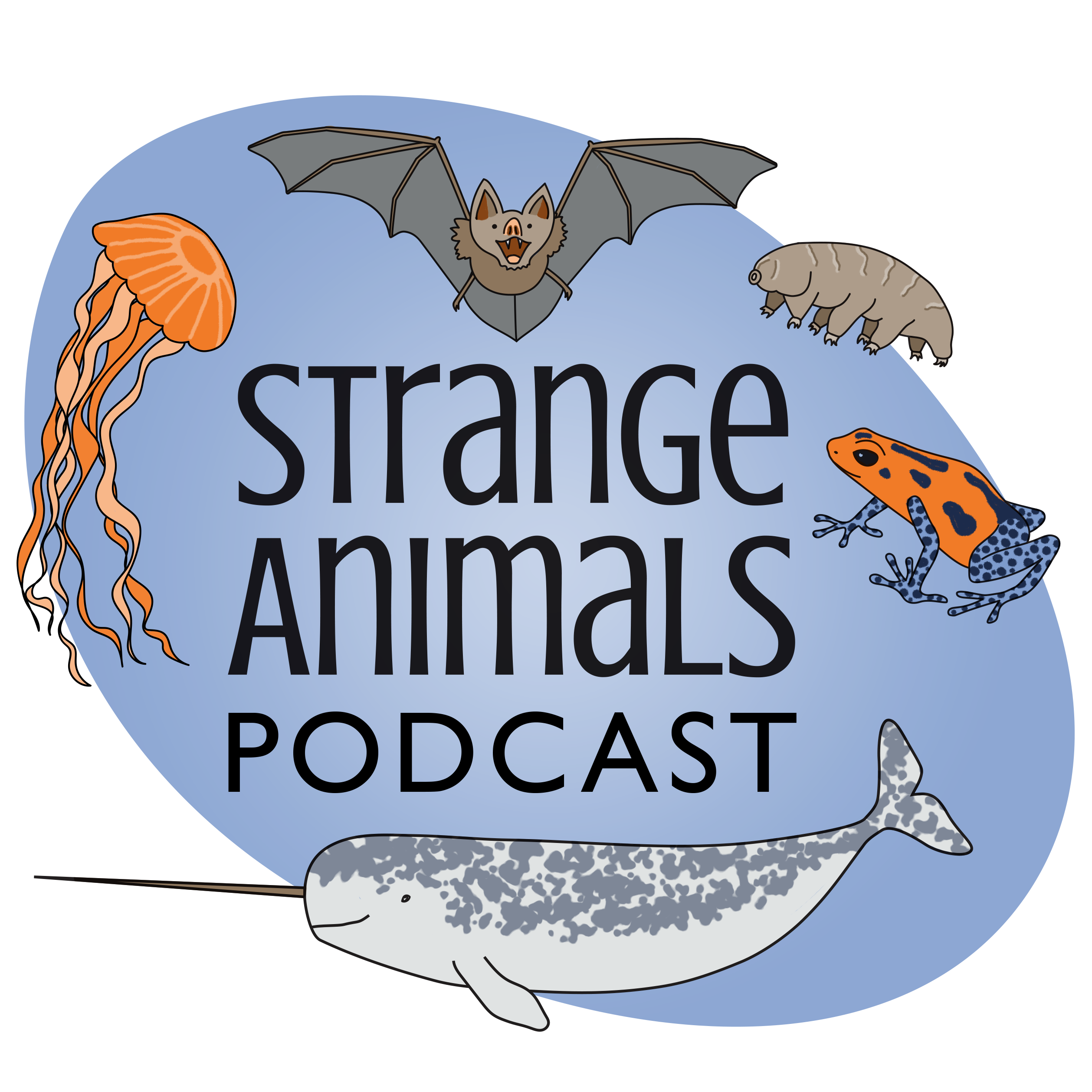Episode 158: Legless Lizards and Other Not-Snakes

What's the difference between a snake and a legless lizard? Find out this week and learn about all kinds of interesting reptiles without legs that aren't actually snakes!\n\nThe slow-worm. Not a snake:\n\n\n\nBurton's legless lizard. Not a snake:\n\n\n\nThe excitable delma. Not a snake:\n\n\n\nThe Mexican mole lizard. Not a snake or a worm:\n\n\n\nThe red worm lizard (Amphisbaena alba). Also not a snake or a worm, but honestly, it looks a lot like I imagine the Mongolian death worm to look:\n\n\n\nThe giant legless skink. Not a snake:\n\n\n\nStacy's bachia. Not a snake:\n\n\n\nFurther reading (and this is where I got the Stacy's bachia picture above):\n\nBachia lizards--look, no hands!\n\nAn Explosive Enigma from Kalmykia\u2014the \u2018Other\u2019 Mongolian Death Worm?\n\nShow transcript:\n\nWelcome to Strange Animals Podcast. I\u2019m your host, Kate Shaw.\n\nA couple of weeks ago we discussed the Mongolian death worm and the possibility that it was an animal called an amphisbaenian, which is a reptile without legs that\u2019s not a snake. But there are lots of other legless reptiles that aren\u2019t snakes. So this week we\u2019re going to learn about legless lizards and their friends.\n\nResearchers have determined that leglessness evolved in reptiles many different times in species that aren\u2019t related, often in species that spend at least part of their time underground. If the legs get in the way of burrowing or other movement, over time individuals born without legs or with much smaller legs end up finding more food than those with legs. That means they\u2019re more likely to reproduce, and their offspring may inherit the trait of no legs or smaller legs.\n\nSome legless lizards look so much like snakes at first glance that it can be hard to tell them apart. The common slow-worm, for instance, lives throughout most of Europe and part of Asia. It grows to about a foot and a half long, or 50 cm, and is brown. It mostly eats slugs and worms so it spends most of its time in damp places or underground. But while it looks superficially like a snake, it\u2019s not a snake. It\u2019s a lizard with no legs. Like some other lizard species, including many legless lizards, it can even drop its tail if it\u2019s threatened and then regrows a little tail stump.\n\nSo how can you tell the difference between a legless lizard and a snake? The one big clue is if the reptile blinks. Snakes don\u2019t have eyelids; instead, their eyes are protected by a transparent scale that covers the eye completely. Lizards have eyelids and blink. Legless lizards have a different head shape from snakes too, usually more blocky and less flattened. The tongue is not so much forked as just notched, and shorter and less slender than a snake\u2019s tongue.\n\nSpecies of one family of legless lizards do sometimes have legs. Honestly, this is almost as confusing as the whole deer and antelope mix-up from episode 116. The family is Pygopodidae and they\u2019re actually most closely related to geckos although they don\u2019t look much like geckos. They look like snakes, and to make things even more complicated, geckos and Pygopodids don\u2019t have eyelids. I know I know, I just said lizards have eyelids but geckos are an exception. Pygopodids don\u2019t have front legs at all, but some do have vestigial hind legs that look more like little flaps than actual legs. They\u2019re sometimes called flap-footed lizards as a result. They live in Australia and New Guinea.\n\nOne Pygopodid is Burton\u2019s legless lizard, which does actually have vestigial hind legs. It lives in parts of Australia and Papua New Guinea and is kind of a chunky reptile with a pointed nose. It\u2019s brown or gray, sometimes with long stripes, and can grow to more than three feet long, or one meter. It eats other lizards, especially skinks, but will also sometimes eat small snakes.\n\nBurton\u2019s legless lizard mostly stays in leaf litter in forests. Sometimes it will twitch the end of its tail to attract a lizard, which it then grabs by the neck. It will swallow small lizards whole,